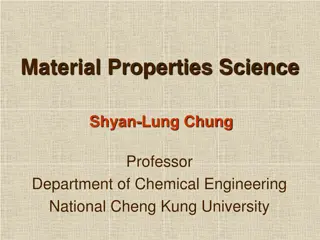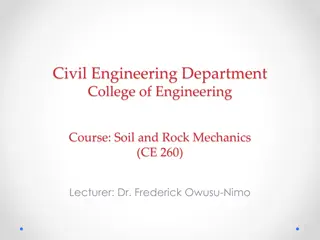Understanding Material Properties and Testing in Engineering
Explore the essential properties of materials like tensile strength, hardness, toughness, malleability, ductility, conductivity, and more in the field of engineering. Delve into the specific requirements for structural, mechanical, and electronic products while learning about destructive and non-destructive testing methods used in material analysis.
Download Presentation

Please find below an Image/Link to download the presentation.
The content on the website is provided AS IS for your information and personal use only. It may not be sold, licensed, or shared on other websites without obtaining consent from the author. Download presentation by click this link. If you encounter any issues during the download, it is possible that the publisher has removed the file from their server.
E N D
Presentation Transcript
Level 2 Engineering Y9 Bridging Work 29/6/20 17/7/20 Properties of Materials and Testing Materials
Task 1 Explain and give examples of the following material properties using one page per property: Tensile Strength Hardness Toughness Malleability Ductility Conductivity Corrosive Resistance Environmental Degradation Elasticity
Task 2 List and explain the material properties needed for Structural Products such as buildings and bridges List and explain the material properties needed for Mechanical Products such as gearboxes, cranes and bicycles List and explain the material properties and circuit requirements needed for Electronic Products such as mobile phones, TV remotes or alarms
Task 3 Explain and give examples of how materials are tested in destructive and non-destructive ways such as: the Brinell, Vickers and Rockwell hardness tests a destructive tensile/ductility test on an extensometer a Charpy, Izod or Houndsfield toughness test Try and explain each test and why it is used on a page each























